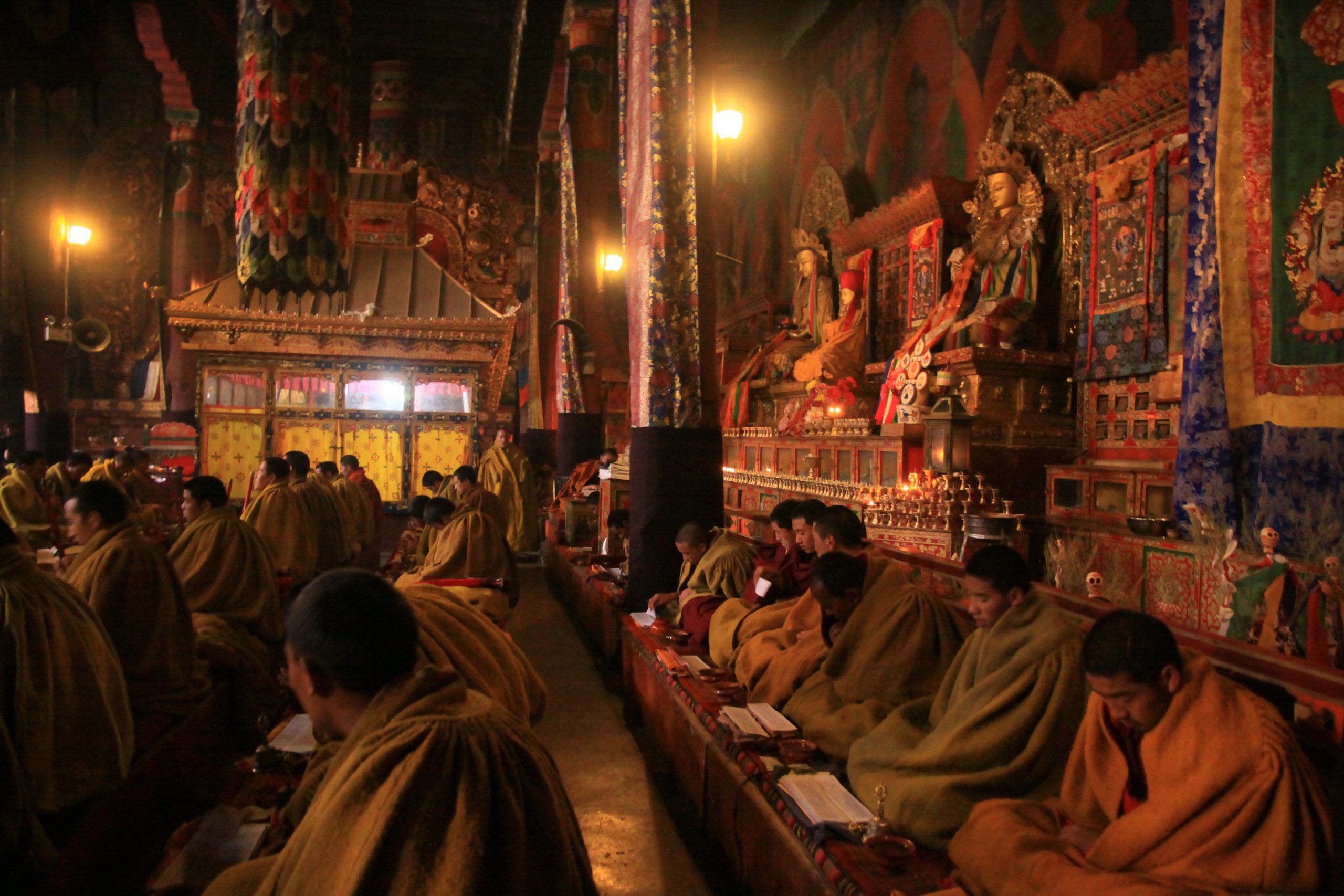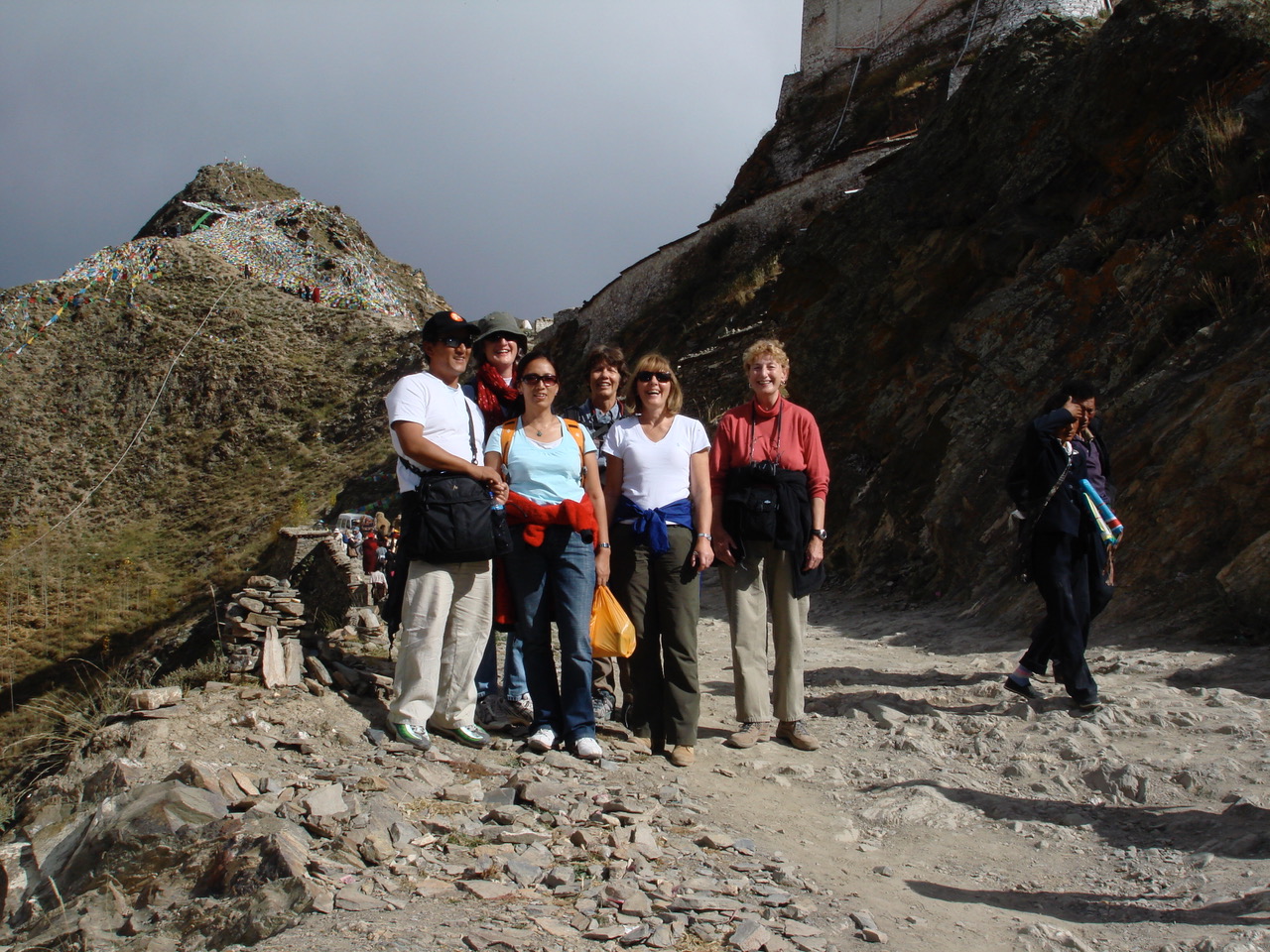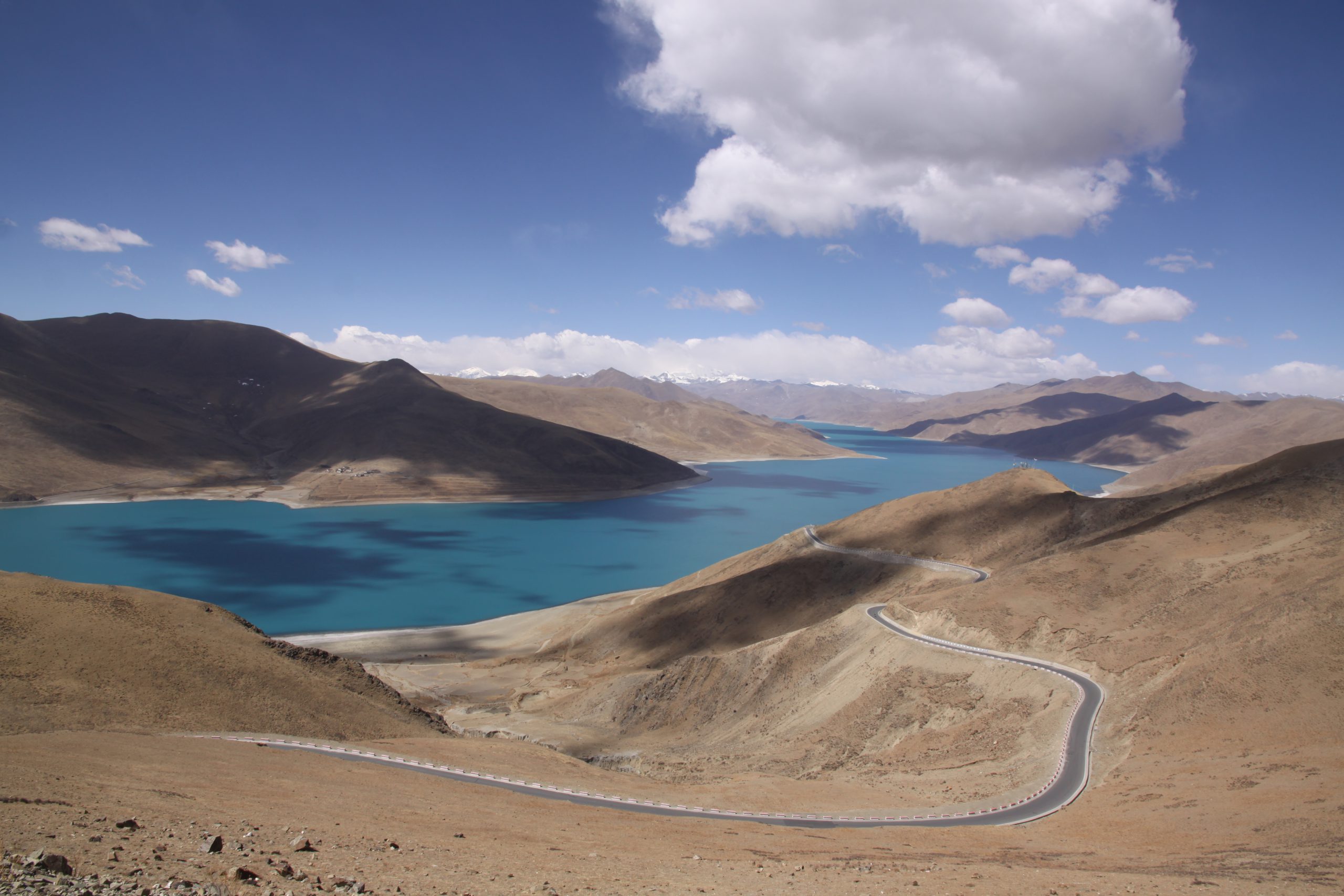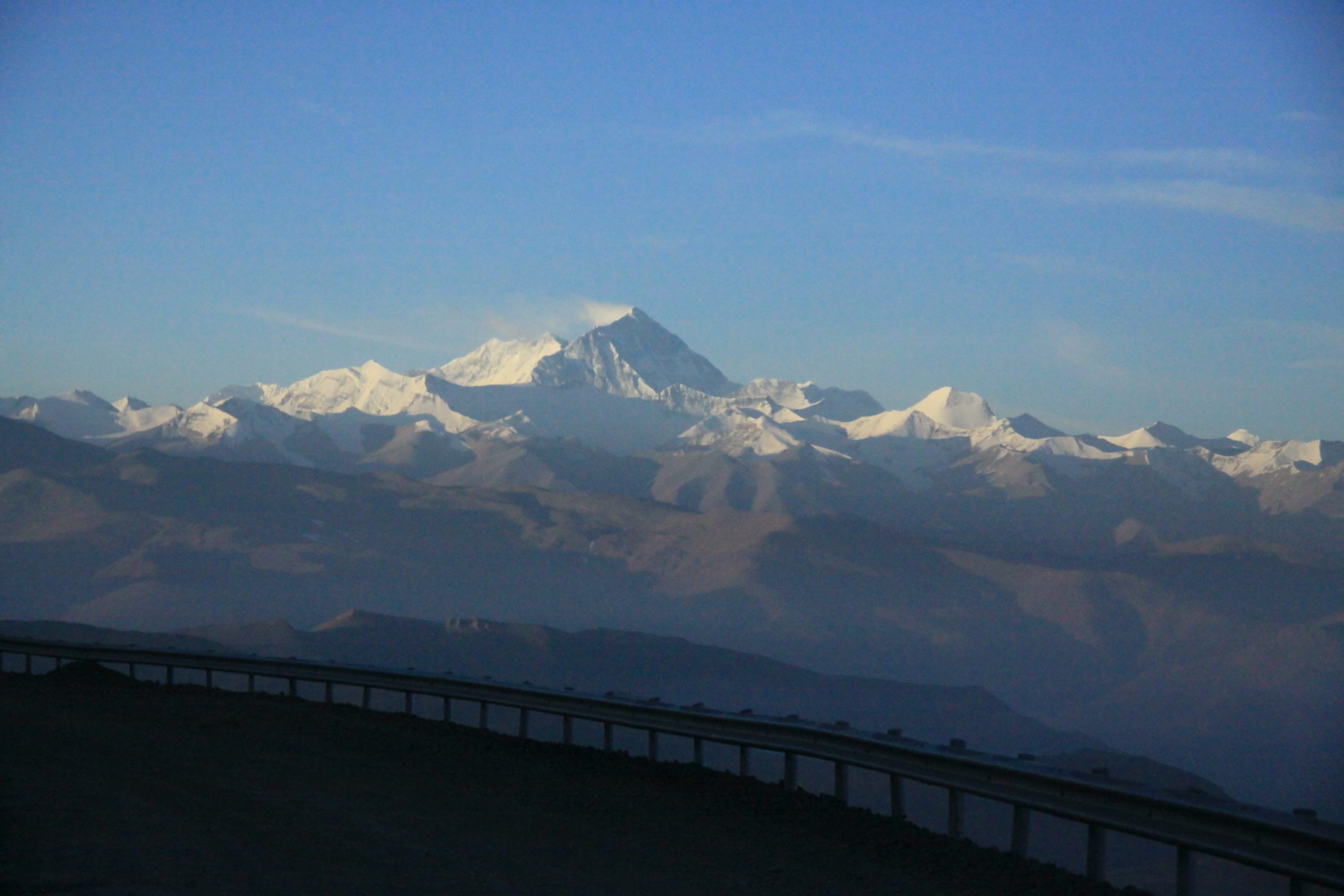Roof of the World
Tibet
March 26 to April 9, 2025
 Private Trip Available
Private Trip Available Safari Overview
Embark on a transformative odyssey through the enchanting topography and profound cultural tapestry of Tibet, a land where ancient monasteries and majestic mountains converge. Your adventure begins with a breathtaking flight over the Himalayas providing a chance to capture an aerial glimpse of the world’s loftiest peaks. Upon your descent onto the remote and serene Tibetan Plateau, you’ll be embraced by the warmth of the people and the sheer splendor of the landscape. Amid this metamorphic quest, Sherpa Tashi Tenzing’s guidance takes on an especially surreal quality. With his deep-rooted connection to the sacred culture and towering peaks, Tashi introduces a unique and insightful dimension to your experience and highlights the mystique that defines Tibet.
HIGHLIGHTS
- Explore the rich cultural landmarks of a deeply spiritual society.
- Enjoy the genuine warmth of a culture largely uninfluenced by the outside world.
- Marvel at the turquoise waters of Yamdrok-tso, one of Tibet’s most sacred lakes.
- Watch the sunrise on the North Face of Everest, then meet the spring climbers at Everest Base Camp.
SAFARI OPTIONS
- Begin your journey early on our Nepal trip from March 13 to 30. Uncover the multidimensional beauty of Nepal as you encounter the bustle of the cities, the inhabitants of the jungle, and the majesty of the Himalayas.
Updated: August 2023

Print Trip
| Date | Description | Lodge | Meals |
|---|---|---|---|
| Mar 26-27 | Travel to Kathmandu. | ||
| Mar 28 | Arrive in Kathmandu. | Kathmandu Marriott Hotel, Kathmandu | D |
| Mar 29 | Fly from Kathmandu to Lhasa and drive to Tsetang | Tsetang Hotel, Tsetang | B, L, D |
| Mar 30 | Visit Samey Monastery and Tsetang valley – drive back to Lhasa. | Star Shangrila or Hilton Hotel, Lhasa | B, L, D |
| Mar 31 - Apr 2 | Spend 3 days exploring Lhasa, meaning “Land of the Gods” or “Holy Place.” | Star Shangrila or Hilton Hotel, Lhasa | B, L, D |
| Apr 3 | Drive to Gyantse – visit the Gyantse Fort and Old Town. | Gyantse Hotel, Gyantse | B, L, D |
| Apr 4 | Drive to Sigatse, the second largest city in Tibet, and visit the Tashilimpo Monastery and the market. | Sigatse Hotel, Sigeste | B, L, D |
| Apr 5 | Drive to Segar via Shakya Monastery. | Chomolungma Hotel, Segar | B, L, D |
| Apr 6 | Experience the North face of Everest Base Camp at 17,388ft with grand views of Everest and the Ronghu Monastery. | Snow Leopard Lodge, Tingri | B, L, D |
| Apr 7 | Drive to Kerong, a border town to Nepal, go through Immigration, and drive to Kathmandu. | Kathmandu Marriott Hotel, Kathmandu | B, L, D |
| Apr 8 | Transfer to airport for flights home. | B | |
| Apr 9 | Arrive home. |
Our Trip Leaders
![]() Tashi Tenzing
Tashi Tenzing
Tashi is a Nepalese Sherpa mountaineer and naturalist with an in-depth knowledge of Nepal’s wildlife, including where to find birds and tigers in Nepal. He is the grandson of the famous Tenzing Norgay, who made the first complete ascent of Mount Everest in 1953. Tashi grew up in Darjeeling and earned a degree from the University of New Delhi. He has successfully summitted Mount Everest (3 times) as well as numerous other challenging peaks and has guided trips, including in the Antarctic, for decades. Based in Kathmandu, his family also runs mountain lodges, builds schools, administers a medical facility, and awards scholarships for young people.
Detailed Itinerary
A glimpse into our journey
Arrive in Kathmandu
Mar 28
Meet Tashi at the airport and transfer with him to the Marriott.
Fly to Lhasa and transfer to Tsetang
Mar 29
Take one of the world’s most spectacular flights with a bird’s-eye view of Everest, weather permitting, across the main Himalayan Range. After a quick hour, you will arrive at Gonggar Airport, about 2 hours from Tsetang, Tibet’s ancient capital. To aid the process of acclimazation, you should then rest quietly for a couple of hours at your hotel and take a relaxed stroll in the afternoon.
Visit Samye Monestary and return to Lhasa City
Mar 30

Begin your cultural exploration of Tibet with a tour of Samye Monastery, the revered birthplace of Tibetan Buddhism. Its full name, Samyé Migyur Lhundrup Tsug la Khang, translates to "Inconceivable, Unchanging, and Spontaneously Perfected Temple." Constructed between 775 and 779AD, this monumental edifice takes the form of a vast Mandala with the central section symbolizing Mt. Meru, the cosmic axis, and the surrounding temples representing oceans, continents, subcontinents, and other elements of Buddhist cosmology. With luck, you'll witness the engaging spectacle of the Great Debate of Samye where monks employ animated gestures as well as logic discourse in lively discussions on Buddhist sutras and scriptures.
Explore Lhasa
Mar 31 - Apr 2

Spend 3 days immersed in the splendid cultural history of Lhasa, famously dubbed "The Forbidden City." Commence your exploration with a visit to the Norbulingka Summer Palace, a testament to Dalai Lama heritage, originally founded by the 7th Dalai Lama and meticulously restored under the guidance of the present Dalai Lama during the 1950s. This revered palace bore witness to His Holiness's pivotal escape to India in 1959, encapsulating a significant chapter of Tibetan history.
Your journey in Lhasa carries you to the heart of the city where the iconic Jokhang Temple awaits—a paramount spiritual nexus revered by all Tibetan Buddhist sects. This sanctuary holds profound significance for devoted Tibetans, many of whom undertake arduous pilgrimages spanning extensive distances, despite their age or physical limitations. As they traverse the sacred shrines within the dimly lit corridors, their earnest devotion creates a deeply spiritual ambiance that resonates with every step.
The vibrant Barkhor market enveloping the Jokhang offers a genuine glimpse into old Tibet, where an eclectic array of goods, though influenced by Chinese trade, is sought after by individuals from diverse corners of Tibet. Amidst this lively marketplace, where Khampas from the east and pilgrims from Amdo and Chumbi converge, you'll find ample opportunities for captivating observation, providing an authentic immersion into the region's cultural tapestry.
Venturing beyond the city's core, you'll encounter the serene Drepung and Sera Monasteries, each offering a unique and tranquil experience. Amidst the labyrinthine alleyways and bustling markets, you have the freedom to amble leisurely or descend to the banks of the Kyichu River where you can watch locals skillfully fishing from traditional yak-skin coracles—a testament to age-old practices.
A pinnacle of your Lhasa exploration is the awe-inspiring visit to the majestic Potala Palace, an architectural masterpiece meticulously crafted from wood, earth, and stone. Originating during the reign of the 5th Dalai Lama, this grand edifice spans an impressive 13 stories, towering 117 meters into the sky, and encompassing over 1000 rooms. Explore its chambers, including the sacred enclave safeguarding the tombs of past Dalai Lamas, and ascend to rooms once inhabited by the 14th Dalai Lama, where panoramic vistas unfurl, offering sweeping views of the ancient city and the Tsangpo Valley.
Another captivating monastery awaits your exploration—Sera Monastery, nestled approximately 5 kilometers north of central Lhasa. As one of Lhasa's esteemed Gelugpa monasteries, Sera, founded in 1419 by Sakya Yeshe, a devoted disciple of Tsongkhapa, holds a storied past, once bustling with a thriving monastic population of 6,000 monks, now condensed to a few hundred. Explore its history where the echoes of scholarly pursuits and spiritual devotion reverberate throughout its hallowed halls.
Gyantse
Apr 3

Leaving Lhasa behind, a truly remarkable sight unfolds as you ascend towards the rim of the valley, granting you a panoramic view of the grandeur of the imposing Potala Palace that commands the vast terrain below. As you make your descent, your path follows the western edge of Tibet's renowned Yamdrok Tso, often referred to as the "Turquoise Lake," an expansive body of freshwater that stretches for kilometers. This sacred lake is believed to hold the potential to reveal glimpses of the future, including visions of the next Dalai Lama after the passing of the current one. The Yamdrok Tso holds a place of profound importance in Tibet's cultural tapestry, embodying the very essence of the region's spirituality and heritage.
Later in the day, your journey continues to the captivating Karola Glacier, one of Tibet's significant continental glaciers. Nestled against the southern slope of Naiqin Kangsang Peak, a towering summit of Tibet, the Karola Glacier feeds the eastern branch of the Nianchu River, and stands in close proximity, a mere 300 meters, from the highway that links Lhasa to Gyantse town. On the opposite side of the road, the snow-clad Mount Kalurong graces your view before you venture closer to the glacier's base. There, you can fully appreciate its frozen splendor, resembling an intricate cascade of delicate ice.
Transitioning from the enchanting vistas of Yamdrok, your route leads you southward to Gyantse, a charming embodiment of traditional Tibetan architectural beauty. With its whitewashed walls and rustic mud-brick roofs, Gyantse stands as a testament to time-honored design. Crowning the town is a 14th-century fortress, perched high above, that bears witness to tales of resilience and fortitude. In the year 1904, this very fortress bore witness to a historic siege during the renowned Younghusband Expedition by British forces. The battle that ensued was marked by remarkable valor, culminating in the surrender of the Tibetan archers to the overwhelming might of British artillery. After the conflict subsided, a gesture of humanity prevailed, as the British extended medical aid to the numerous wounded and dying Tibetans, a poignant moment that left an indelible mark. The enduring scars of this encounter are etched onto the walls of the Gyantse fort in the form of artillery shell impressions, serving as a lasting tribute to the enduring spirit of those who stood their ground.
Shigatse
Apr 4

A two-hour drive leads to Shigatse, Tibet's second-largest town, where you'll explore the renowned Tashilumpo Monastery, the monastic abode of the esteemed Panchen Lamas. Nestled beneath the watchful gaze of Mount Dromari, this sanctuary was founded in 1447 by the first Dalai Lama. While the monastic community at Tashilumpo has diminished from over 4,000 monks in the early 1950s to approximately 700 at present, the monastery remains vibrant and dynamic as evidenced by the animated religious and philosophical debates that unfold within its main courtyard. Should time allow, an exploration of the local Tibetan markets is a rewarding endeavor. Though not abundant in goods for purchase, the opportunity to observe Tibetans engaging in lively bargaining offers delightful entertainment.
Shigaste serves as the administrative hub of a vast region once known as Tsang, encompassing much of Central Western Tibet. In historical context, it stood as a rival to Lhasa, which exerted its influence over Central Eastern Tibet. Poised at the confluence of the mighty Yarlung Tsangpo and Nyangchu Rivers, Shigatse commands one of Tibet's most fertile agricultural terrains. The valley flourishes with the vibrant hues of barley, rapeseed, wheat, beans, and a plethora of vegetables.
Segar via Sakaya Monastery
Apr 5
The journey from Shigatse to Shegar spans approximately 5-6 hours guiding you across an expansive and sweeping plain to reach this quaint town, which once served as a vital trading hub for the Sherpa people from Nepal, facilitating trade between Tibet and the Khumbu Valley on Everest's southern flank. In bygone times, Shegar boasted a fortress majestically poised upon the cliffs above along with the presence of the revered "Shining Crystal Gompa" monastery. Today, the town is characterized by a harmonious blend of an ancient Tibetan quarter and a more extensive Chinese sector. Above the historical village enclave, the remnants of the fortress wall, adorned with lofty towers, ascend the mountainside from the monastery's ruins, culminating at a barren pinnacle where the bastion's foundations endure. This picturesque location, offering a magnificent vista across the valley to the majestic Mt. Everest, rewards those who undertake the climb with a view of unparalleled beauty and grandeur.
Everest Base Camp and Rongbuk Monastery
Apr 6

From Shegar, your journey takes you to the Rongbuk Valley, a site neighboring the magnificent Dza Rongphu monastery, renowned for its proximity to Everest. Nestled against one of the world's most breathtaking backdrops, this monastery underwent significant destruction during the Cultural Revolution at the hands of local villagers only to now be resurrected through the diligent efforts of those same villagers. The origins of this site trace back approximately two centuries with the initial gompa established as a Buddhist nunnery. By the 1950s, the population swelled to nearly 250 inhabitants, predominantly nuns, but the events of 1959 saw a mass exodus leaving behind only a handful of monks and nuns dedicated to the monastery's restoration. The intricate wall murals and interior artwork, never captured through photographs, are now being meticulously restored relying primarily on memory.
Rongbuk Valley, aptly named the "Sanctuary of the Birds," was once subject to strict prohibitions against harming any animal or bird within its bounds. The 1921 British Everest Reconnaissance Expedition discovered the valley's wildlife to be remarkably docile, with even wild blue sheep venturing close to the monastery. In those times, the monastery pulsated with vibrant life and activity drawing pilgrims from far-flung corners who journeyed thousands of kilometers to pay homage to this revered haven.
Rongbuk remains incomplete and is believed to have been erected during the early part of the century and later succumbing to destruction between 1965-1975. The last abbot fled to Nepal as the monastery crumbled leaving behind only its hollow shell. The stupa, plundered and stripped of its treasures, has been painstakingly reconstructed with support emanating from within Tibet and abroad. With concerted efforts, the aspiration is for Rongbuk to reclaim its former grandeur and sanctity. Here you will absorb the breathtaking vistas, ascend the Rongbuk Glacier, observe the monks and nuns ardently engaged in their restoration endeavors, and explore the iconic Everest Base Camp where there will be few tourists, and you will have the chance to chat with the spring climbers.
Kathmandu via Kerong
Apr 7
Leaving Tingri behind, you'll head southward and be treated to a stunning view of the towering Himalayan range as it rises dramatically from the expansive Tibetan Plateau. Upon reaching Kerong, an essential checkpoint, you'll undergo the necessary immigration and customs procedures preparing for the next leg of your journey. Continuing along, you'll follow a winding route that eventually leads you to the renowned Friendship Bridge, a symbolic marker dividing China from Nepal. Once you've crossed this threshold, you'll proceed through the protocols of Nepali customs and immigration, officially marking your entry into Nepal, leading you back past Tashi’s coffee plantation to Kathmandu. Here, the lush and fertile Kathmandu Valley provides a striking contrast underscoring the sharp distinction between Tibet's arid desert landscapes and the flourishing greenery of Nepal.
Depart Kathmandu
Apr 8
After breakfast, transfer to the Kathmandu airport for flights home.
Arrive home
Apr 9
Tibet
Join Tashi Tenzing on a personal journey through Tibet to Everest, a pilgrimage reverberating with his profound Sherpa heritage.
27.70844316604758, 85.32366664255068
- Cost & Payments
- Included
- Not Included
- Climate
- Fitness Level
- Flights
 Conservation
Conservation- Conditions
Cost & Payments
Costs (in US$)
| Type | Cost Per Person |
|---|---|
| Trip Cost, double occupancy | $7,450 |
| Single Supplement | $990 |
Costs are per person, double occupancy, not including airfare (except for round-trip flights between Delhi and Leh), singles extra. See Included and Not Included sections for more details.
If you are a single traveler, we will try to find a roommate for you, but if we cannot pair you with a roommate, we may charge you a single supplement. Single rooms cost extra and are subject to availability.
Payment Schedule
| Payment | Due Date | Amount Per Person |
|---|---|---|
| Deposit | Due now to reserve your space | $1,000 |
| Final | September 25, 2024 | Remaining Balance |
Payments are due based on the schedule above. All reservations require a deposit to confirm reservation of your space.
Cancellations
Until the Final Payment due date, deposits are refundable except for a cancellation fee of $150 per person, which can be applied toward another trip if reserved within six months of the cancelled trip’s departure date. Cancellations are non-transferrable. No refunds are given after the Final Payment due date.
Included
- Carbon offsets for the duration of this trip.
- All leaders, transport, park entry fees, landing fees, and permits for all activities unless described as optional.
- One-way flight from Kathmandu to Lhasa.
- Accommodations (double occupancy) for the nights of March 28 to April 7.
- Meals from dinner on March 28 through breakfast on April 8.
- Transfers on March 28 and April 8 between the Kathmandu Marriott and the Kathmandu airport.
- Trip Planning Materials – information about entry requirements, flights, packing, gratuities, etc.
Not Included
- Carbon offsets for your flights to/from this trip.
- All airfare (except flights listed as included), airport and departure taxes, and excess baggage fees. Airfare is approximately $1,000 to $1,500 from the US to Kathmandu, Nepal and back depending on airport of origin.
- Passport and visa fees.
- COVID tests.
- Divergent airport transfers and extra hotel nights.
- Gratuities – tipping is always discretionary. However, we will add a gratuity of $300 per participant ($30 per participant per day for 10 days with our local guides) to your final payment.
- Mandatory emergency evacuation insurance.
- Optional trip cancellation insurance.
- Items of a personal nature such as laundry, telephone calls, medical costs or hospitalization, room service, alcoholic and other beverages, items not on the regular menu, etc. If you have special dietary needs, please indicate them on your Traveler Form.
Climate
The early spring weather in Tibet can range from lows around freezing to highs in the 50s°F and 60s°F. It is typically dry and sometimes windy. The weather should be clear for full views of Everest.
Fitness Level
This trip involves moderate walking; however, the elevation ranges from 11,811 feet in Tsetang to 17,598 ft at Everest Base Camp, which can make moderate more difficult. Though Tashi is an expert in safe acclimatization, if you have heart or lung disease, or other reasons to suspect high altitude may pose a problem for you, please talk to your doctor before booking this trip. Please contact us if you have any health concerns that may make this trip challenging.
Flights
Detailed logistical information is included in the Trip Planning Materials we will send you.
Flights you book
- Arrive in Kathmandu, Nepal (KTM) by 11:59pm on March 28. If you are arriving from our Nepal trip, see the Flights section in its itinerary for arrival information.
- Depart from Kathmandu, Nepal (KTM) after 12:00 am on April 8
Flights we book
- The one-way flight from Kathmandu to Lhasa is included in the trip cost.
FAQ
Accommodations
Motion Sickness
Transportation
Conservation
Our company ethos has always regarded conservation as inseparable from responsible tourism. We struggle with the dilemma that traveling worldwide expends climate-changing carbon. However, we wholeheartedly believe that traveling with us will cultivate your passion for conserving our beautiful world while stimulating each destination’s local economy. We encourage you to explore the various ways in which Cheesemans’ operates within this context:
- Cheesemans’ Trips are Carbon Neutral.
- Offsetting your Travel to/from our Trip: We ask you to pledge to offset the carbon emissions for your travel to and from our trips. You can purchase offsets with most airlines (Delta includes them automatically), use our handy carbon calculator and donate to Sustainable Travel International, or contribute to your favorite offsetting organization.
Conditions
Read our current Terms and Conditions.

 Tashi Tenzing
Tashi Tenzing